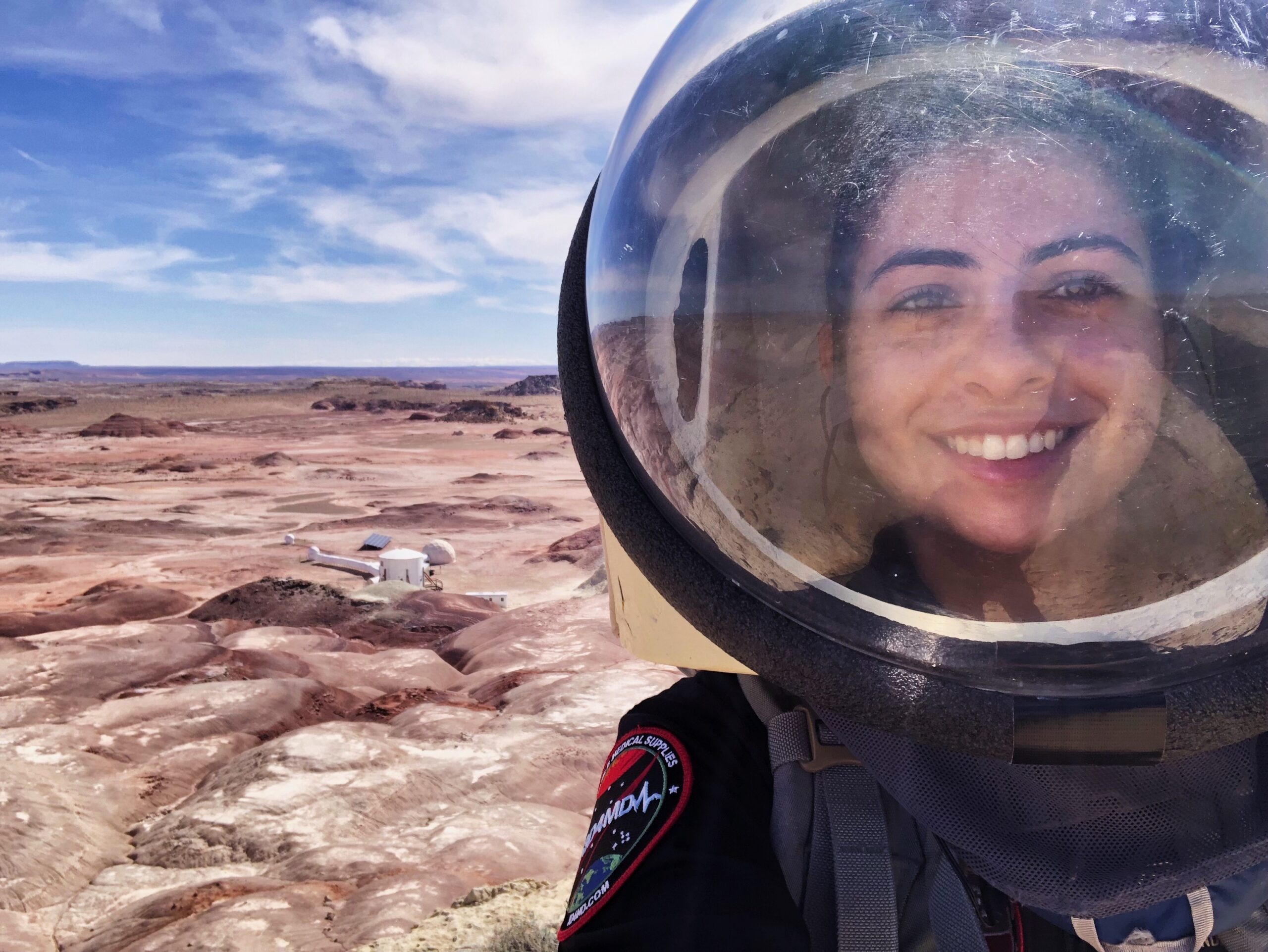
Research Project: Analysis of Patellofemoral Joint (Knee) Pain using Kinematics
Independent thesis research project conducted with Dr. Michael Rainbow at Queen's University Human Mobility Research Laboratory from October 2017 - April 2018.
SUMMARY
In my final year of my BASc in Biomechanical Engineering, I decided to pursue an optional research thesis with my professor, Dr. Rainbow. With a biomechanics lens, I was interested in understanding knee joint motion and how it correlates to pain.
Research Question: How does the patella move with respect to the femur in dynamic motions, specifically how does it engage with the femur's trochlear groove?
Hypothesis: The patella will move as a linear function of knee flexion, given by the tibiofemoral joint (TFJ).
Main Findings: PFJ motion is coupled with TFJ motion, however the patella behaves differently during flexion and extension, thus it does not move simply as a function of knee flexion. Future studies can use this research as a baseline for normal patella function, then compare this to patella function of persons with PFJ pain.
Biomechanical model animation showing PFJ motion during a lunge. Patella shown in green, femur & trochlear groove shown in red, tibia shown in blue.
PRESENTATION
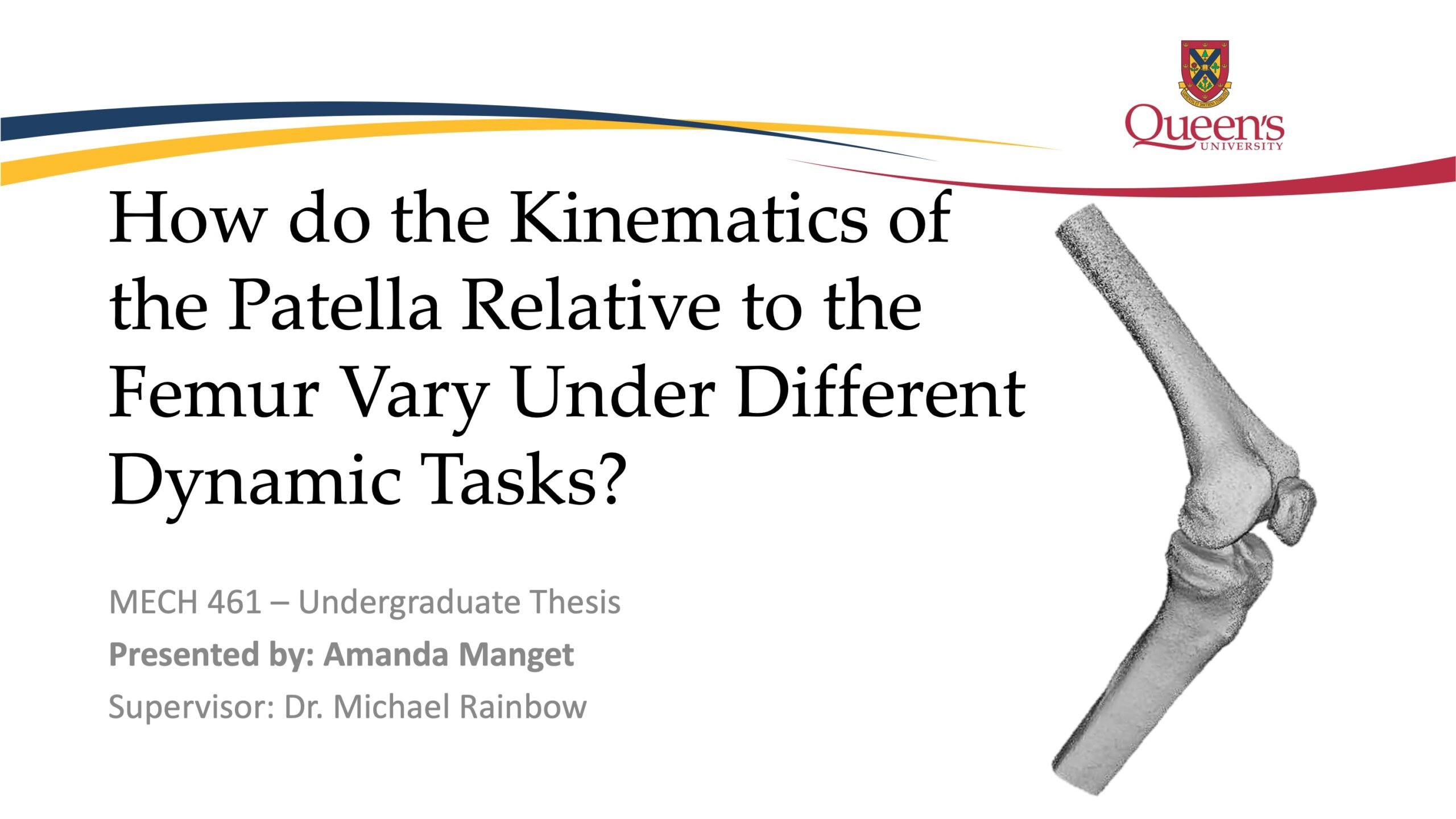

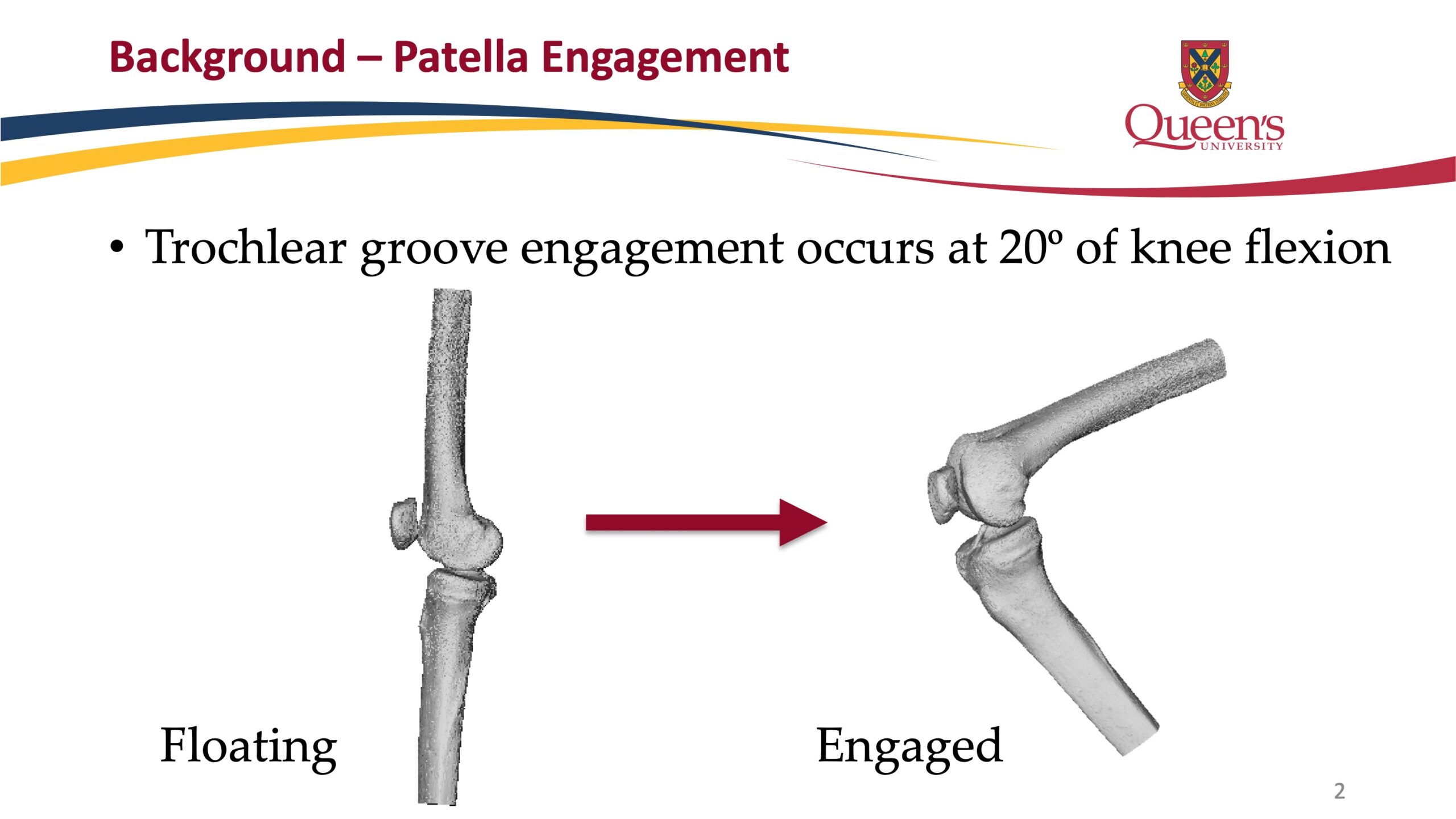
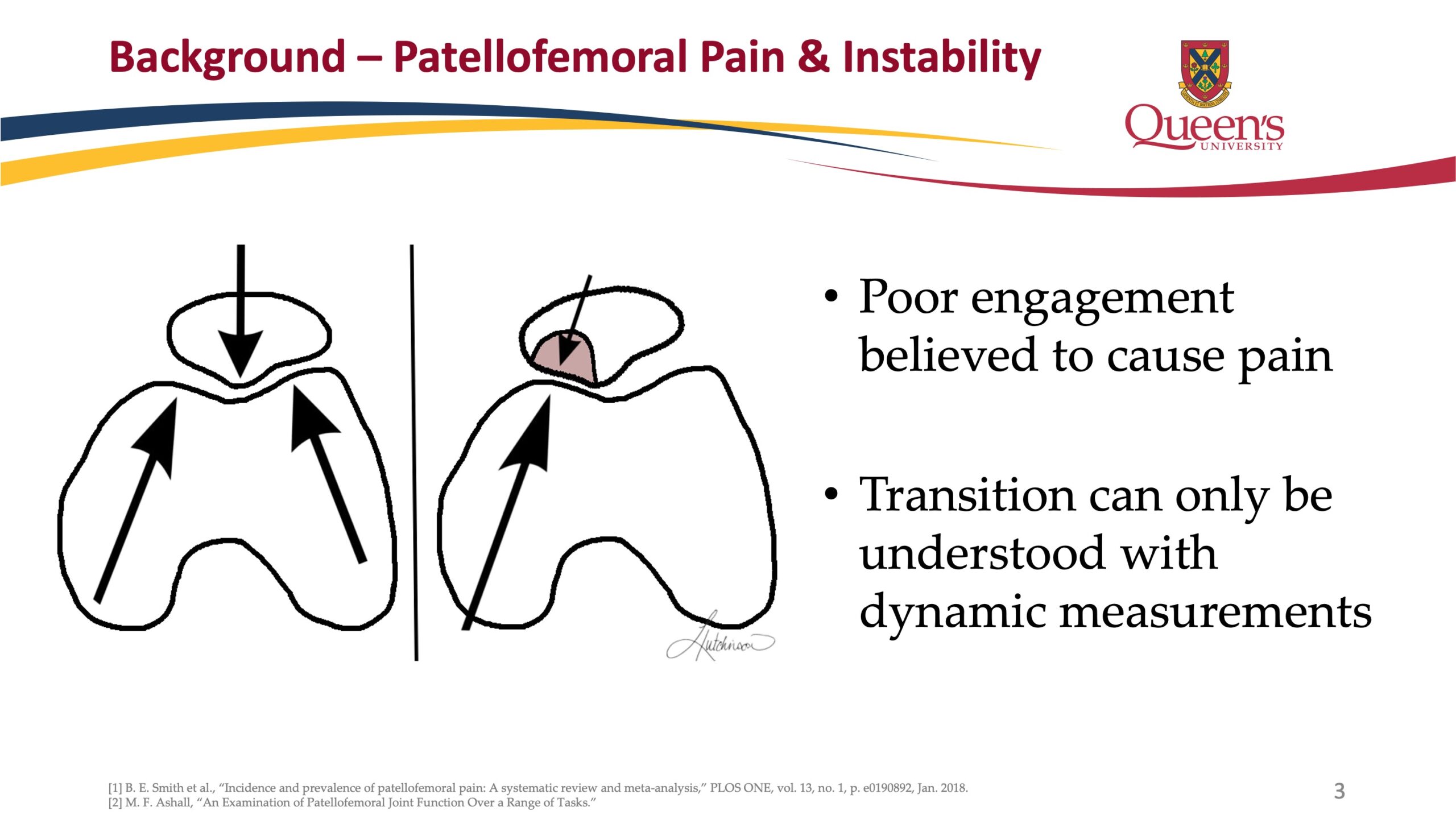
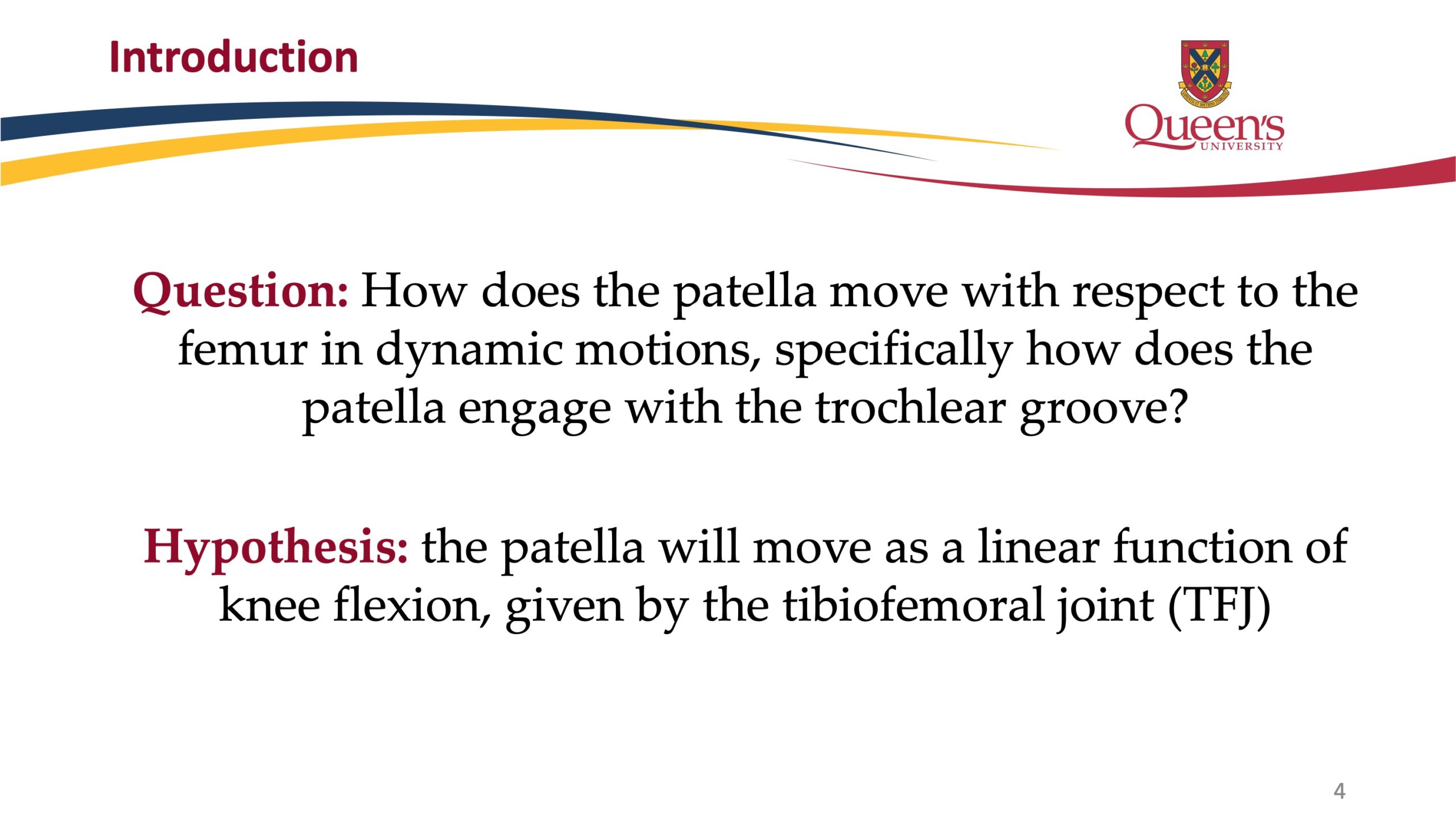

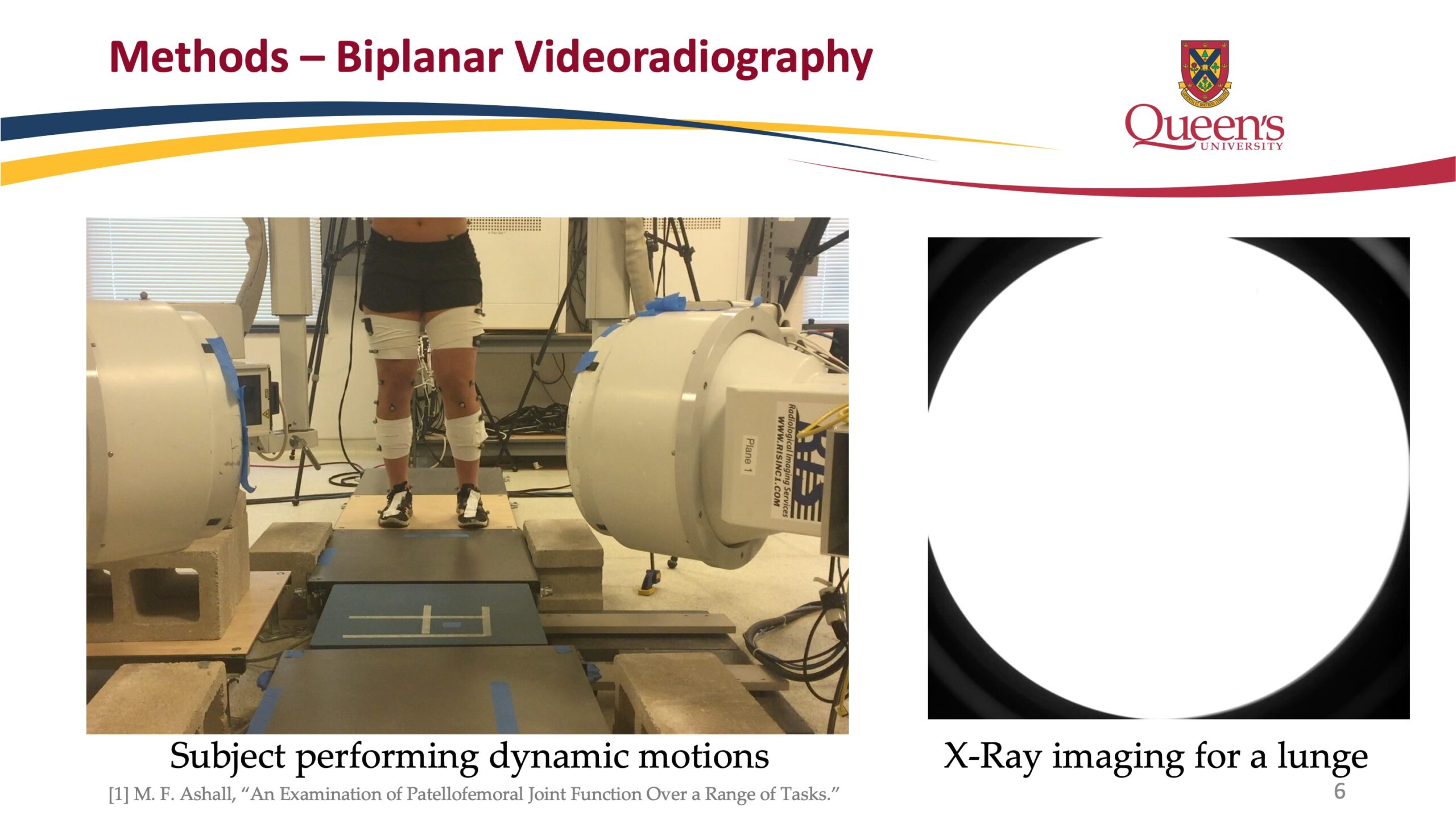
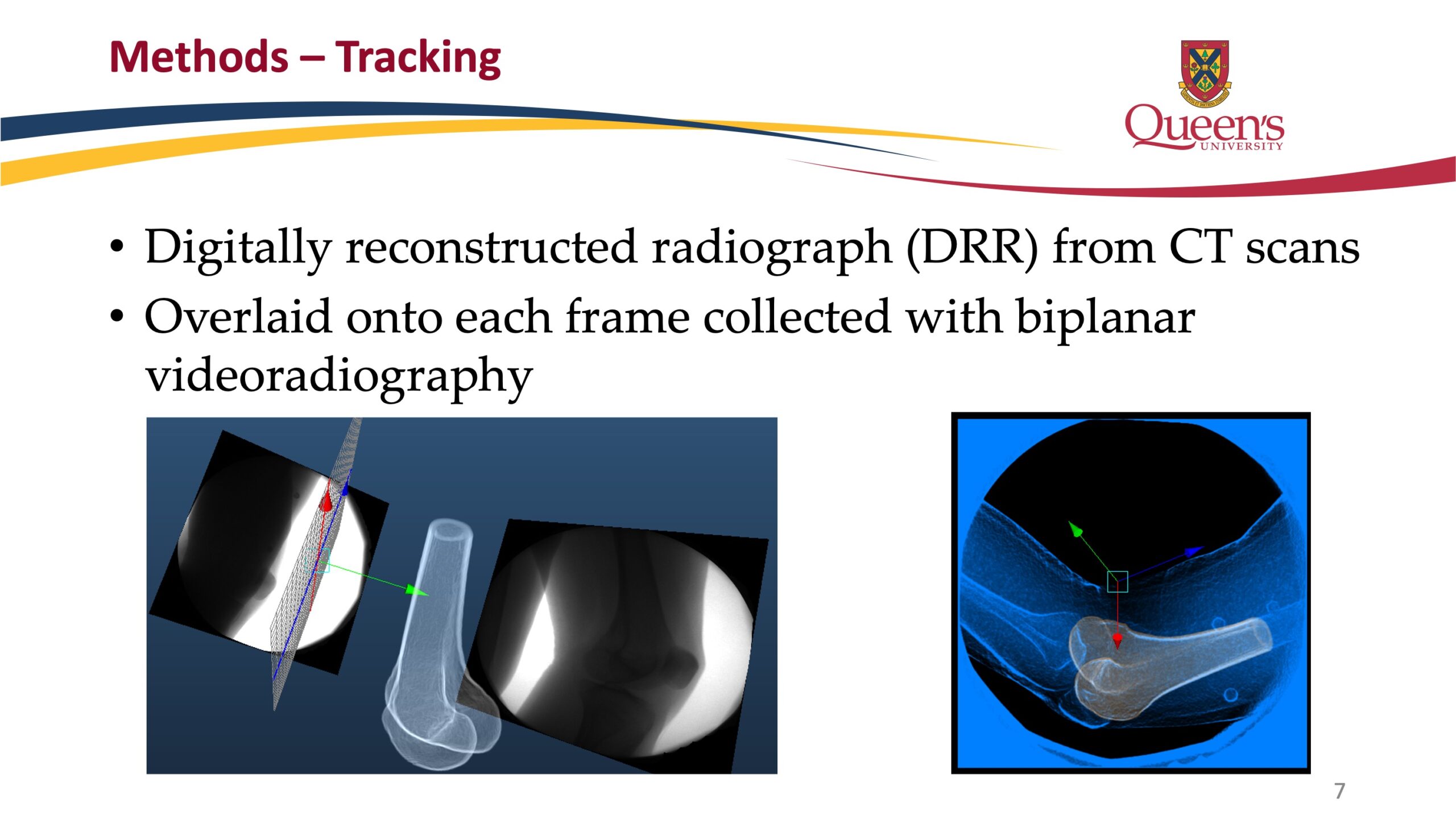
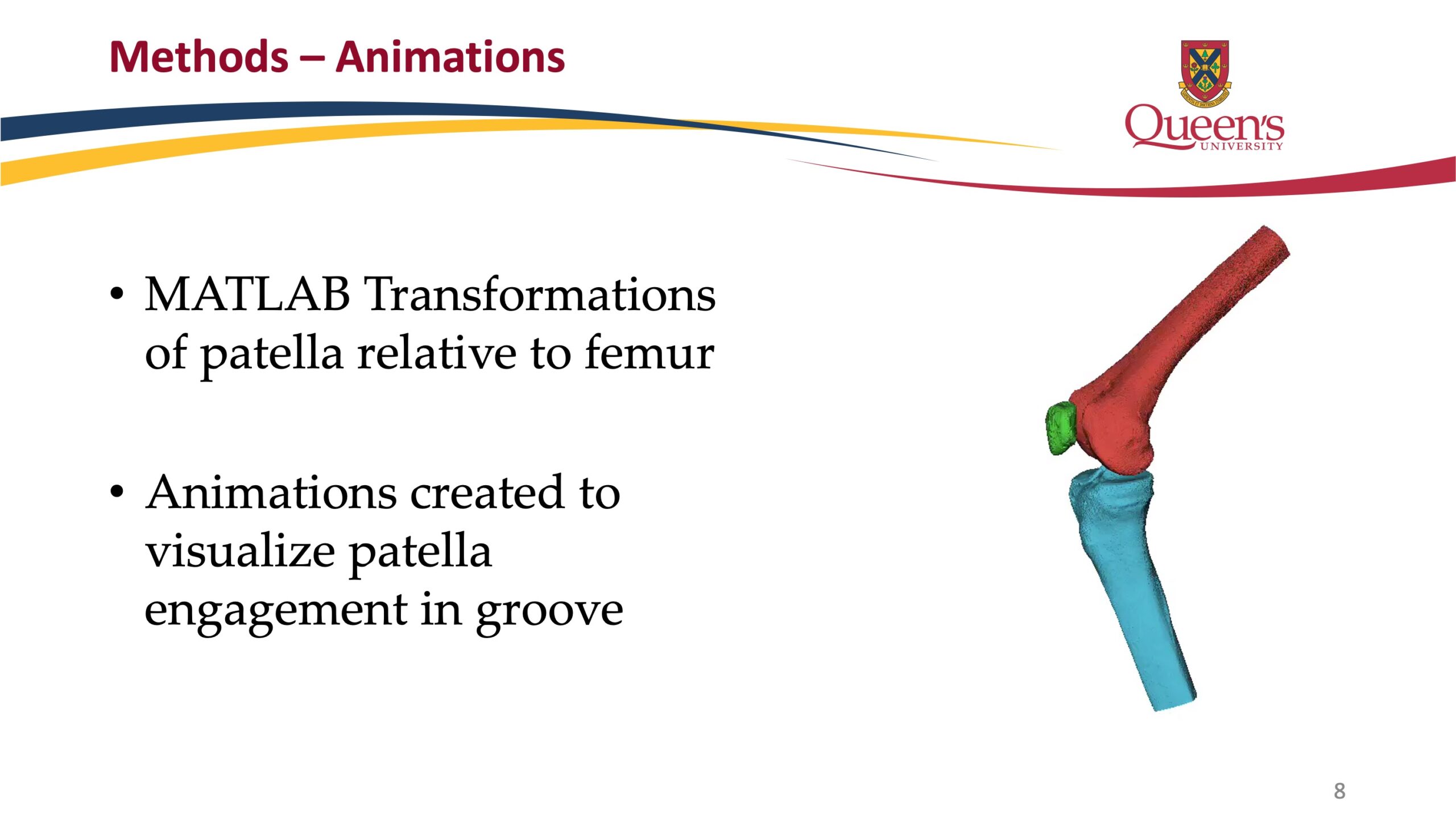
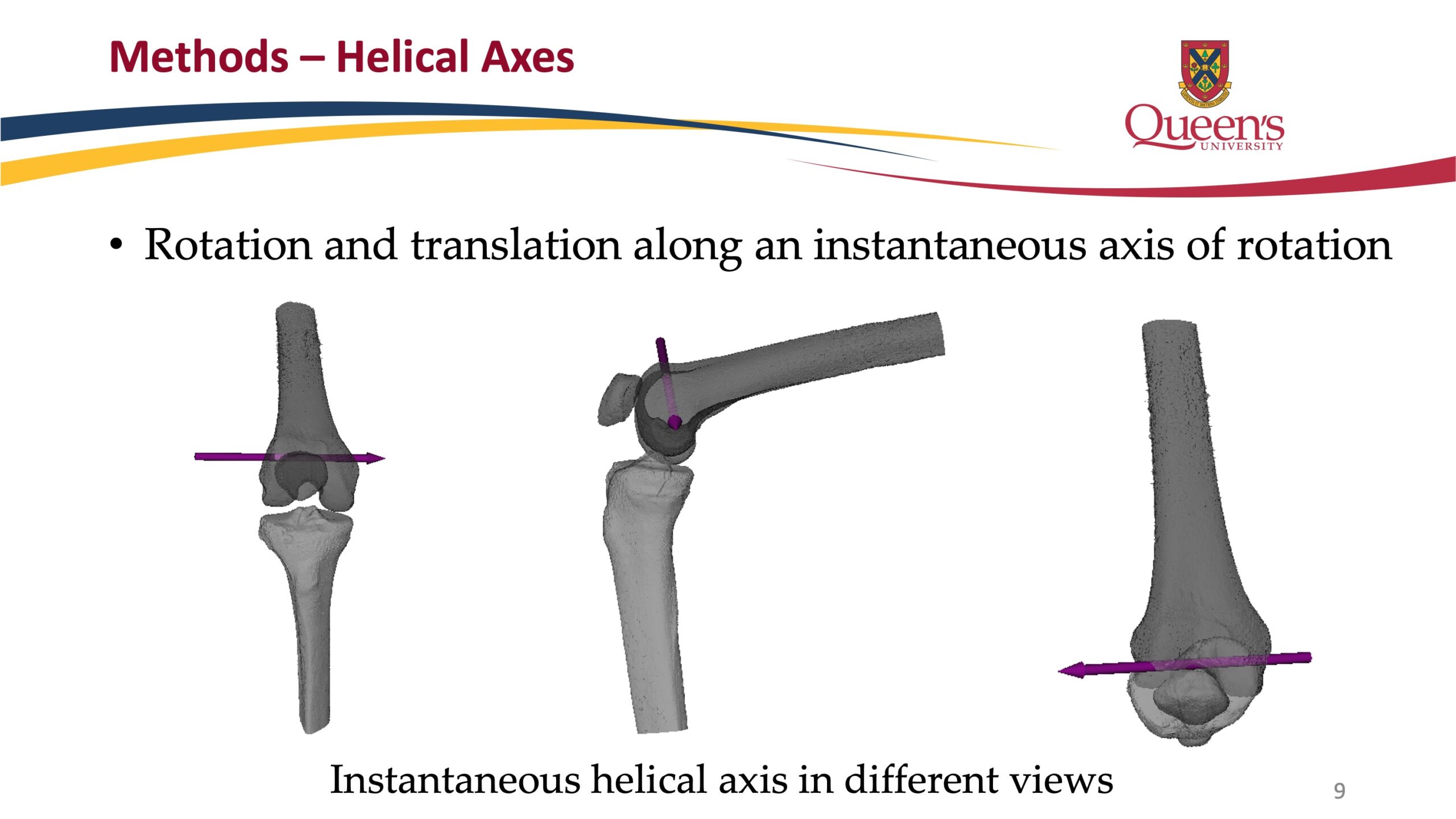



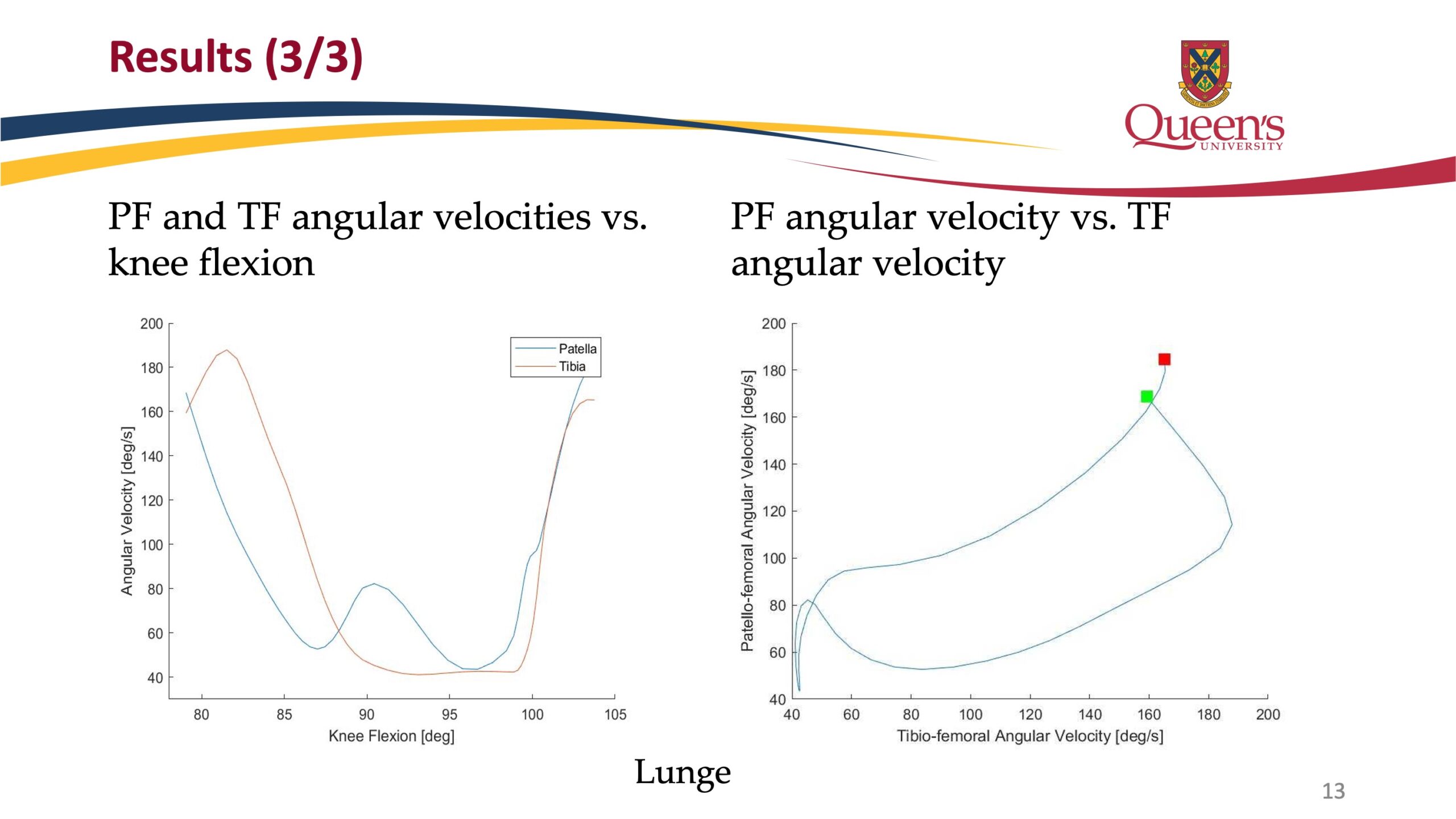
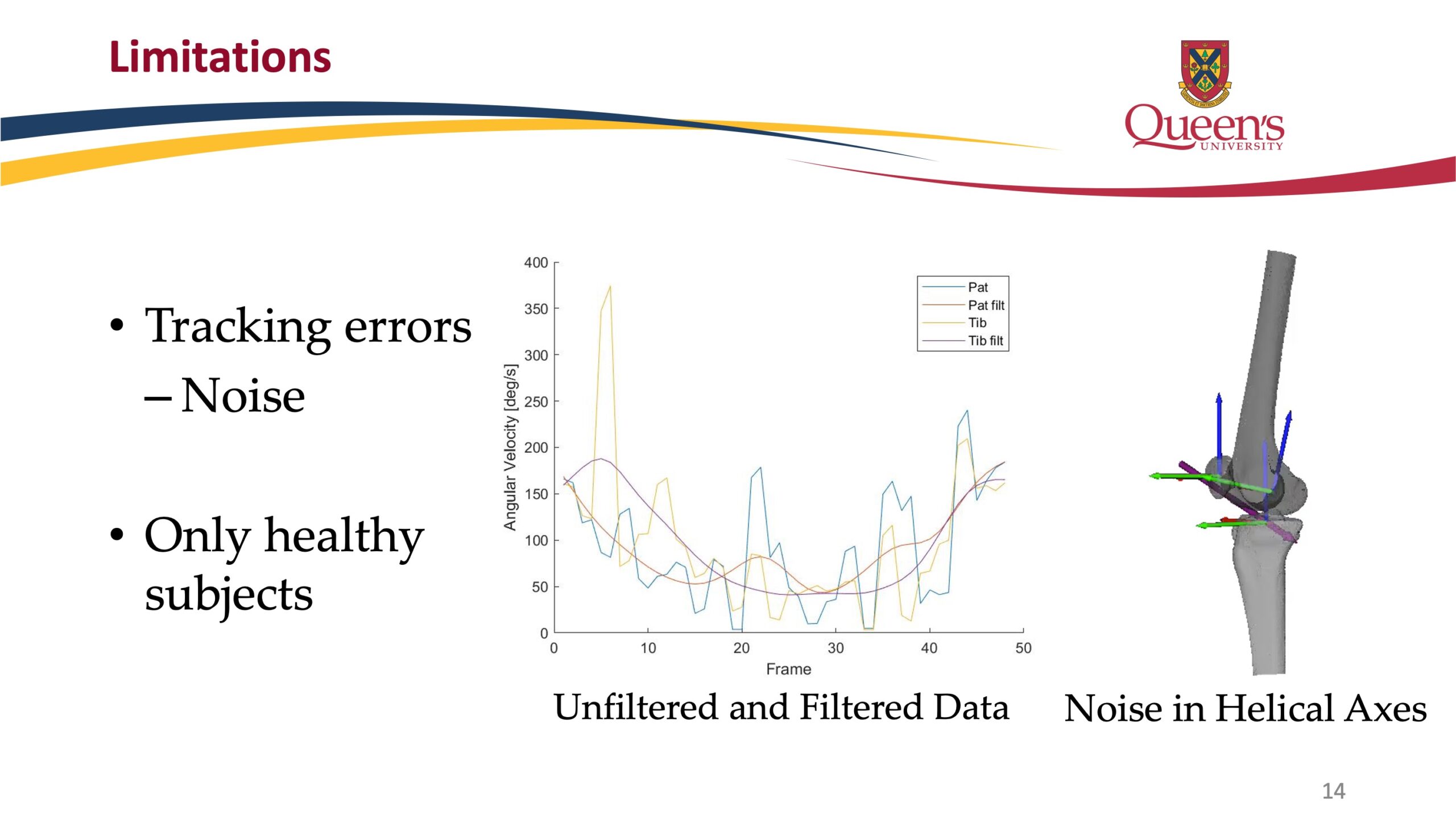
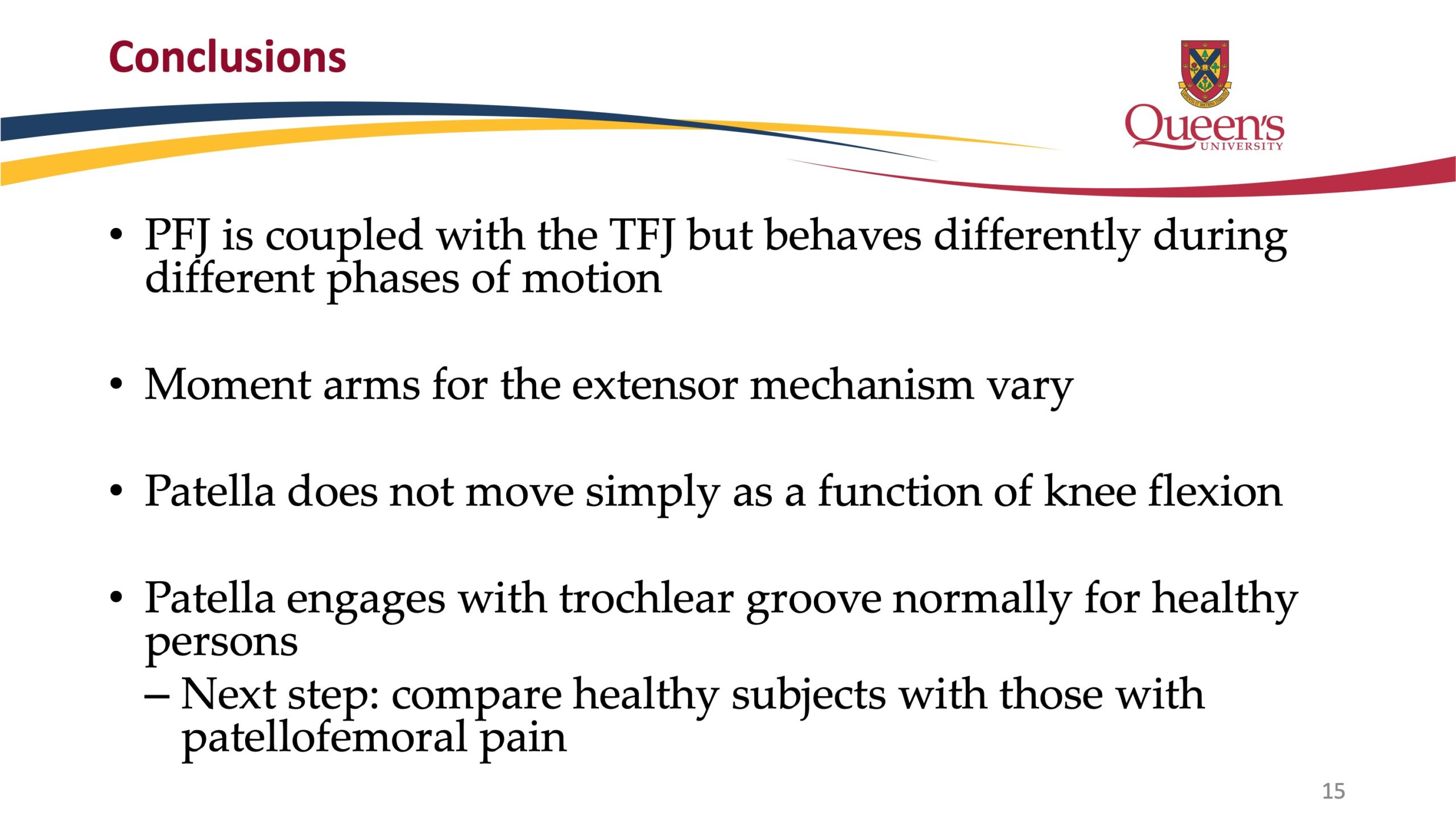

FUTURE WORK
This research established a baseline for 'normal' patella motion in the femur's trochlear groove. I am hypothesizing that those with PFJ pain would have 'abnormal' patelle motion in the trochlear groove, which could mean higher bone-bone contact or strain on the surrounding tendons. Future work would include retrieving the same set of data for subjects with PFJ pain, and comparing the motion with the healthy subject data.
VIEW MY OTHER PROJECTS:

Xpan: A Less Invasive Surgical Access PortPhysical Products

Xpan Brand Revitalization: Logo & Web DesignDigital Products

New Start Foundation: Logo & Web DesignDigital Products

Fino: A Youth Financial Education AppDigital Products
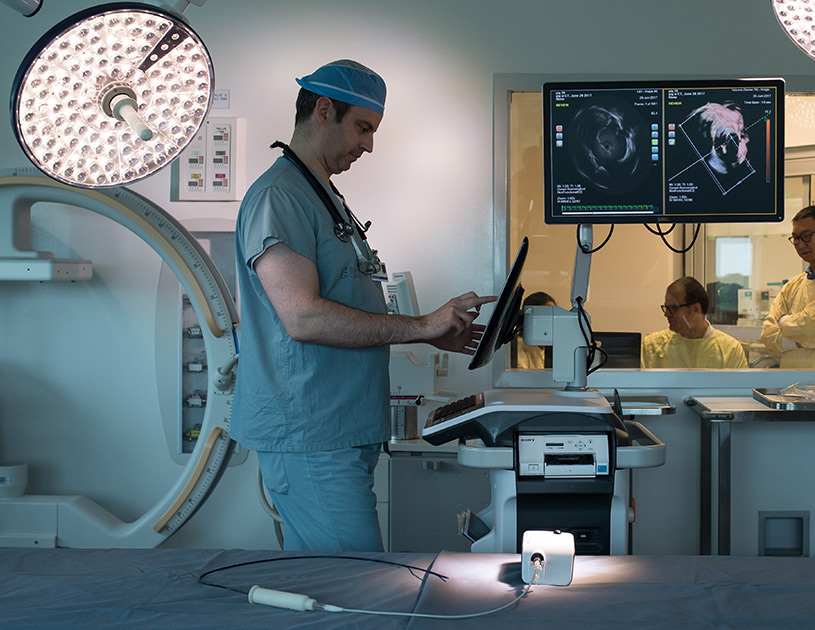
AR Needle Guidance System for Heart Fluid AspirationPhysical Products

100% Reusable Faceshields for COVID-19Physical Products
